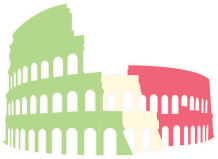‘Puro Semplice e Naturale nell’arte a Firenze tra Cinque e Seicento’
Galleria degli Uffizi, Florence
17th June – 2nd November 2014
Beginning in the Uffizi Gallery on the 17th of June, don’t miss this exhibition celebrating the importance of purity and tradition in the history of Florentine art.
In his tome of artists’ biographies “Vite” (1658), Giorgio Vasari gave enormous credit to the Florentine painters Andrea del Sarto and fra’ Bartolomeo for their important role in revitalising modern art, placing them on the same level as Leonardo, Raffaello and Michelangelo.
Their output was centred around the constant exercise of drawing, and stood out due to its honesty, purity, simplicity and closeness to nature. A century later, a text on professors of drawing by Filippo Baldinucci reiterated Vasari’s thoughts, seeing in these artists’ work the necessary methods to overcome the impasse brought on by Mannerism, while simultaneously creating a new artistic language which would coincide with the spiritual decrees of the Council of Trent.
Although they recognised the importance of these artists and what they represented, neither Vasari nor Balducci were particularly drawn to their specific style, preferring the grandeur of Rome and the uniqueness of the Baroque respectively. For this reason, these movements enjoyed more success in terms of historical significance and popularity, and it was not until the 1920s, 50s and 60s, with art historians such as Hermann Voss, Mina Gregori and Fiorella Sricchia, that the true importance and continuing links between the Florentine artists of the 16th and 17th Century were analysed in the way that they deserved.
The exhibition is divided into nine sections, consisting of around eighty paintings and sculptures by thirty-five different artists. It features a section dedicated to two central figures, Andrea del Sarto and Santi di Tito, as well as shining a light on lesser-known artists such as Della Robbia, the Sansovinos, Franciabigio, Bugiardini, Sogliani, Bronzino, Poggini, Bandini, Ciampelli, Tarchiani, Vannini and Novelli.
All of these fall under the overriding theme of the collection, the spotlight on the “innovation of tradition” which holds such an important place in the history of artistic identity in Florence.
Buy tickets for other Florence attractions and exhibitions here

